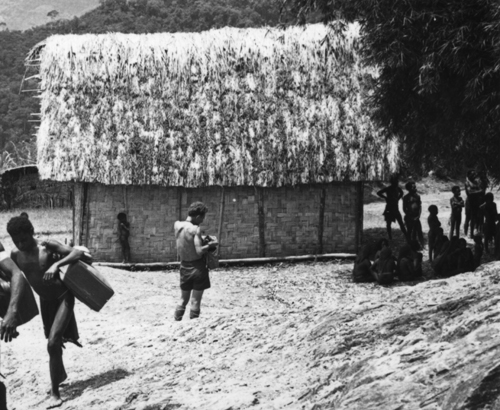There were several structures built of local
materials at each haus kiap.
One was intended for the
exclusive use of the Patrol Officer or other officials, such as
medical personnel and agricultural officers, who also made regular or
occasional "patrols" through the area to carry out such duties as
malaria surveys or the introduction of new crops. If this shelter was
not in use by any officials of the Australian government, other
"Europeans" such as anthropologists were welcome to use it. The other
shelters were designated for native
policemen and carriers and for native people on long-distance trips
who may have been caught on the road at night.
Haus kiaps were often referred to by
the name of the particular location within the clan territory where
they were built, such as Tababe, the location of the haus kiap shared
by the Fungai-Korama and Bomagai-Angoian clan clusters, or Fogaikump,
the location of the haus kiap of the Kono clan. Alternatively, they
were referred to by the name of the clan, e.g., the Tsembaga haus kiap.
On our first walk from Simbai to Gunts we did not
use any of the haus
kiaps for overnight stays. On one
of our subsequent walks, we had the pleasure of sharing the Singanai haus kiap with a group of people travelling from the
Gainj area. We were particularly grateful as they already had a
campfire going when we arrived, and they immediately offered to
share it with us. |


